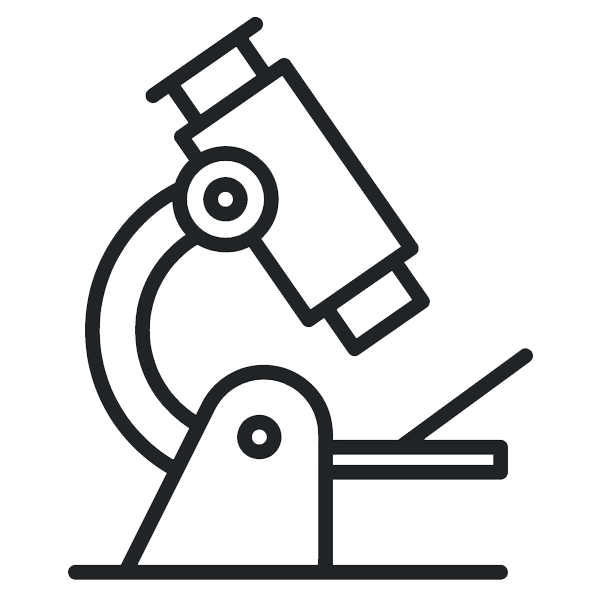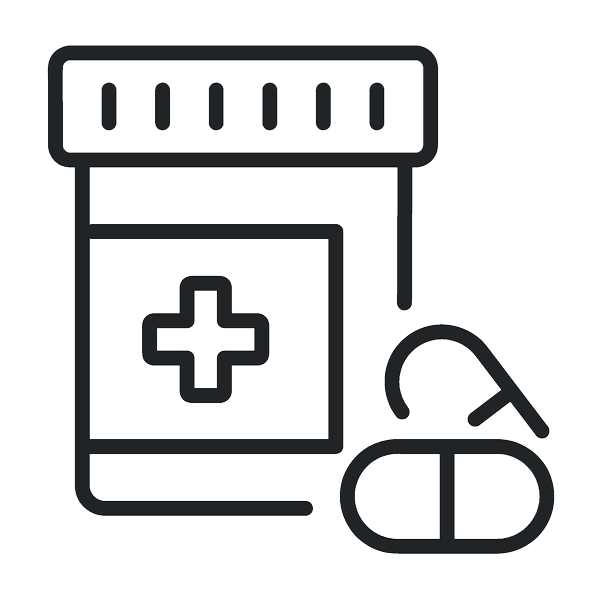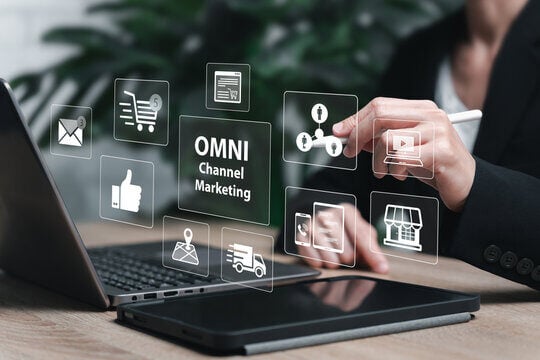An increasing number of pharmaceutical companies are transitioning to omnichannel marketing as their key approach to customer acquisition and retention. Seeing this shift, many companies are willing to try the strategies. This guide will help you understand omnichannel marketing in pharma and provide the best practices and strategies.
What is Omnichannel Marketing in Pharma?
Marketing in the pharmaceutical industry is challenging due to several factors. The product is difficult and requires much studying to adopt. Meanwhile, the target audience consists of HCPs who are overwhelmed with constant workload and stress and don’t have much time to study the new product in-depth.
Omnichannel marketing in pharmaceutical industry addresses these challenges by creating a consistent personalized customer journey across several channels gradually educating HCPs about the product.
Multi vs. Omnichannel
To understand omnichannel better, we suggest comparing it with multichannel. These two approaches are sometimes confused as both span across several channels. The difference is, however, in how these channels are utilized for building the customer journey.
Traditionally, pharma companies bombard HCPs with generic messages that repeat across the channels they use, adding no actual value. When a new channel is added, the messaging is transferred there almost unchanged.
Instead, the omnichannel approach builds a gradual personalized learning experience across multiple channels. Each channel is used as a step in the educational process and adds more in-depth information.
|
Multichannel |
Omnichannel |
|
|
Strategy |
Separate strategies for each channel |
One strategy for all channels |
|
Approach |
Channels operate independently |
Channels work together |
|
Personalization |
No |
Yes |
|
Information delivery |
Repeated messages across multiple channels |
Different messages with a gradual learning curve |
|
Customer journey |
Interrupted: the customer bounces between channels |
Consistent: the customer is led from one channel to the next |
|
Analytics |
Quantitative (per channel performance) |
Qualitative (overall customer experience) |
Benefits of Omnichannel Marketing in Pharmaceutical Industry
According to McKinsey, the early adopters of multichannel have seen increases in HCP satisfaction (5-10%), marketing efficiency (10-20%), prescriptions (3-5%), and revenue (5-10%).
Overall adoption of the omnichannel approach has several benefits:
1. Increase in HCP engagement
The traditional marketing approach creates a disruption in work and overwhelms the amount of educational materials that are unloaded on an HCP at once. Omnichannel mimics traditional educational approaches where the complexity of information increases gradually, giving a student time to build knowledge.
E-detailing portals also enable HCPs to choose what to learn, when to learn, and at what pace. It also provides a better structure for information compared to siloed content in multichannel environments.
Personalization helps HCPs to relate better to the materials that they are reading. Finally, the increasing number of HCPs are digital-natives and this trend will only increase in the future as Gen Z is gradually entering the workforce. This means that your target audience is used to learning using digital media.
2. Improvement of marketing ROI
Increased HCP engagement with your marketing materials helps you reach your marketing objectives more efficiently. Eventually, it translates into a better understanding of your product and more prescriptions.
3. Better analytics
In multichannel, you get an analysis of each channel's performance separately. The omnichannel approach additionally analyzes the performance of the entire customer journey.
The State of Omnichannel Marketing in Pharma Today
The current state of the industry provides both opportunities and blockers for the development and implementation of omnichannel approaches.
New Technologies
New IT technologies enable companies to create digital environments where HCPs are guided from one channel to another in their educational journey. These technologies also enable marketers to create analytics about the customers and quickly make necessary changes to improve engagement and ROI.
Today, the early adopters are testing AI and ML technologies to improve customer analytics and gain new insights.
New Type of HCPs
As we mentioned above, an increasing number of HCPs are accustomed to digital education and are ready for the transition to an omnichannel approach. Additionally, modern customers expect a personalized customer-centric approach that they’ve encountered while interacting with other businesses outside their jobs.
Regulatory constraints
The pharmaceutical industry is one of the most heavily regulated across multiple jurisdictions. Navigating these regulations while trying to implement omnichannel pharma marketing can be challenging. Some of the biggest restraints are posed on outreach to HCPs and data privacy regulations.
Top Omnichannel Marketing Strategies in Pharma for 2025
In this section, we’ll list the most efficient strategies in omnichannel Marketing for Pharma that you can implement in your company.
Personalized Engagement
Create content that caters to the specific needs of your target audience. You can create several personas with their unique sets of needs. Remember that you also need to understand the patients that HCPs treat and their issues as well.
Emphasizing these pain points makes your content (and your product) more relevant to HCPs and thus drives higher engagement (and higher sales).
For example, the company offers a non-stimulant ADHD treatment for adults based on α2 agonists. The pain points of the HCPs treating adults with ADHD include among many others:
- adverse effects of stimulants used in legacy ADHD treatments
- reluctance of some people to take stimulants due to internal bias
- the low efficiency of other non-stimulant solutions like atomoxetine.
- the gradual development of drug insensitivity to the limited number of ADHD treatment options (for those adults who were diagnosed as children and treated for a long period).
Knowing these pain points you can craft messaging that emphasizes the non-stimulant nature of the new drug and the proven efficiency in clinical trials as compared to other non-stimulants. You can also talk about minimal side effects in adults and emphasize that it’s an evidence-based alternative to stimulants and the way to fix the drug tolerance issue.
Telemedicine
As telemedicine is becoming increasingly popular, you can integrate it as one of the channels in your buyer journey. This will help you grasp the attention of patients and impact the HCPs through them.
Integrated Platforms
Since you need to create a seamless customer journey across multiple channels with a gradual learning curve, you need to integrate all your digital assets. You need to ensure the informational flow, brand consistency, and seamless transition between channels. You also need to collect and store all the data in one place to ensure the high-quality omnichannel analytics.
Making channels work in unison requires fine-tuning all the channels and connecting them in one system. You’ll need constant support of your IT team or hire a pharma marketing agency with full-stack tech capabilities.
AI-Driven Insights
Invest in AI solutions to get insights about both HCPs and patients. These insights can help you offer solutions that will enable your product to stand out on the market.
For example, many adults with ADHD report forgetting to take their meds at least once a month. This is a widely known “cultural artifact” within the neurodivergent community. But is it true? Most importantly, if it is true, how can you help patients take their medication on a regular basis?
If it is true, the impact of your treatment on ADHD symptoms can be lower and lead to higher complaints and lower prescription rates. An AI can help you discover these issues by analyzing the large data assets and act in time, for example by creating a free app that reminds patients to take their medicine. This will increase the value of your treatment, the awareness in the ADHD community, and the prescription rates.
Compliance-Driven Automation
Adopting marketing automation can help you increase the efficiency of your marketing team’s work. Giving mundane tasks for programs can free time and foster creativity in your team. Keep in mind that any tools you acquire for your company should comply with existing regulations. Compliance will also make sure that you adhere to ethical principles in your work, which is critical in the pharma taking into account the levels of trust people have in the industry.
Challenges of Implementing Omnichannel Marketing in Pharma
When trying to implement an omnichannel strategy pharma companies can encounter a number of challenges.
Multinational Nature of Pharma Companies
Most pharma companies operate in multiple markets with different cultures and customs. This creates challenges in terms of localization and planning the journey. A successful customer journey that works in one country doesn’t necessarily be as successful in another.
Compliance
Apart from language and cultural differences between countries, there’s also the difference in compliance requirements. The extensive use of technology in omnichannel can provide additional issues. For example, some legislations mandate that any data collected by companies is stored only in data centers that are physically located within those countries.
Data Privacy
Successful omnichannel heavily depends on collected data. However, that can pose an additional burden of guaranteeing data security within the system, especially, taking into account the transition to cloud solutions and the elimination of traditional security perimeter.
Internal Culture
Internal corporate culture can be the biggest supporter or the biggest obstacle in implementing omnichannel. It can also be both when part of the team is ready to embrace the changes while another part is fiercely opposing it. It can create a long-lasting ripple effect within a company.
Corporate Inertia
Many pharma companies are large corporations. Their multilayer hierarchical structure prevents the rapid introduction of changes.
Overcoming Challenges in Omnichannel Implementation
One of the efficient ways to tackle the above challenges is to partner with a marketing agency that specializes in pharma marketing services.
NANOBOt Pharma Marketing Agency can help you by suggesting technologies that meet your compliance requirements and data safety. We have the necessary culture and mindset for implementing an omnichannel strategy, while free of hierarchical constraints and inertia.
We have experience in building omnichannel campaigns in multicultural environments and can help you avoid the pitfalls.
Omnichannel Campaign Planning in Pharmaceutical Industry
In this section of our guide, we discuss the essential steps and best practices in planning omnichannel campaigns in 2025.
Define Objectives & KPIs
Start with setting the goals for your campaign. Remember that goals should be attainable and measurable so that you can evaluate the performance of your marketing efforts.
An example of objectives for omnichannel campaigns can be:
- Increased HCP engagement with the KPIs like +5% open rate and +10% time on page
Analyse Your Target Audience
As marketers, you know your audience already. However, at the planning stage, it’s good to revisit your buyer personas once again. Apart from firmographics and demographics, we suggest paying attention to the following aspects:
- Preferred channels
- Learning styles
- Pain points
- Daily work routines
You might have to revisit the analytics gained from your separate channels or conduct additional research. At this stage, it’s also necessary to check which type of content has the best response rate at each channel. It can help you plan your customer journey better.
Select the Channels
At this stage, you need to choose the channels for your outreach. The following channels have proven efficient in the pharma industry:
- Website
- Organic traffic
- E-detailing
- Outbound marketing
- PPC
- Webinars
- Social media
- Professional Medical events (like congresses, conferences, etc)
- Self-service portals
Plan Customer Journey
When planning omnichannel digital engagement in the pharma industry, you need to think about it as a learning journey that spans several channels. Each step of this journey should give more information than the last one. You can also plan for different sequences of touches for the same audience to see what works best for you.
An example of a customer journey:
HCP receives an approved email about a new treatment for ADHD in adults based on α2 agonists.
Intrigued, since these are only used in pediatrics, they click on the link leading to the landing page about the treatment and its efficiency.
The landing page contains the link to the downloadable clinical studies report.
After several days, the sales rep contacts the HCP and sets up a meeting to discuss the new ADHD treatment in detail.
At the meeting, the rep helps HCP gain permanent access to e-detailing to continue their learning journey.
In a week, the HCP gets an invite to participate in a webinar dedicated to the new α2 agonists' treatment for ADHD.
Plan Personalised Messaging
Content plays a critical role in omnichannel digital engagement in pharma. Plan a gradual increase of information load with each channel in the sequence. We suggest starting light and sweet and keeping it personalized. Personalization requires a profound understanding of the pain points of your target audience.
Select Tools
Tools are important for the successful implementation of omnichannel campaigns in pharma. You’ll need the following solutions:
- Email sendout
- CRM
- Marketing analytics
- E-detailing
- AI tools
Tips for planning your toolkit:
- check out your tech stack to see what solutions you already have and what solutions need replacement
- when searching for tools, ask your legal and IT teams to help you with security and compliance.
Define Processes and Roles
This stage is sometimes overlooked by marketing teams. It is critical to plan each step of omnichannel campaign implementation and assign people in charge of each process. At this stage, you might understand that your team experiences a talent and skill gap. You might close it, hiring people or a pharma marketing agency.
Analyse and Optimize Campaign
Efficient marketing heavily depends on constant analysis and tweaking to achieve the best result. Be prepared that you’ll be optimizing omnichannel marketing in pharma on a regular basis.
Successful Omni Channel Campaigns in Pharma
The NANOBOT team was contacted by an EU-based pharma company that experienced difficulties transitioning to omnichannel due to internal corporate culture and siloed processes.
We carried out their transformation in 4 main steps:
- Analysis of the current state of marketing and sales and identifying opportunities for development.
- Analysis of the available tech stack and employee skill sets.
- Creating a detailed plan for transitioning to omnichannel.
- Implementation of the plan and supporting projects.
Learn more about the results of this omni channel marketing campaign by NANOBOT.
Concluding Thoughts
Despite the challenges such as compliance and security concerns, omnichannel marketing in the pharmaceutical industry is becoming increasingly popular. The approach enables marketers to increase HCP engagement in their products, improve analytics and grow marketing ROI. Popular omnichannel strategies include personalization of content, AI analytics and insights, integration of platforms, telemedicine, and automation.


